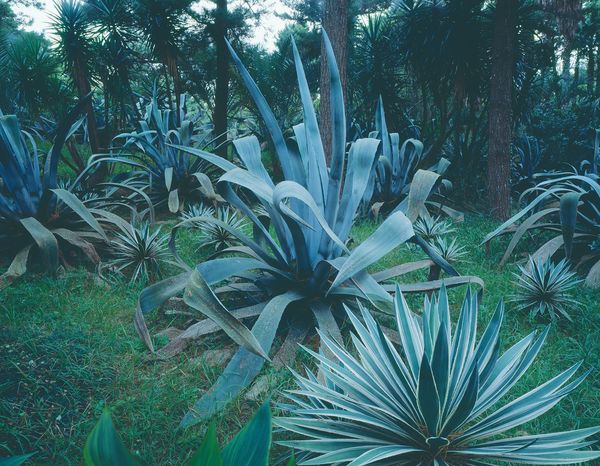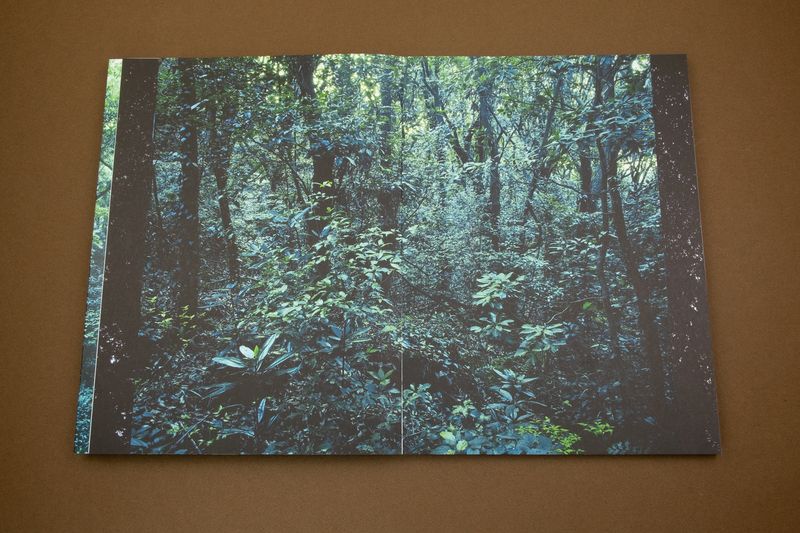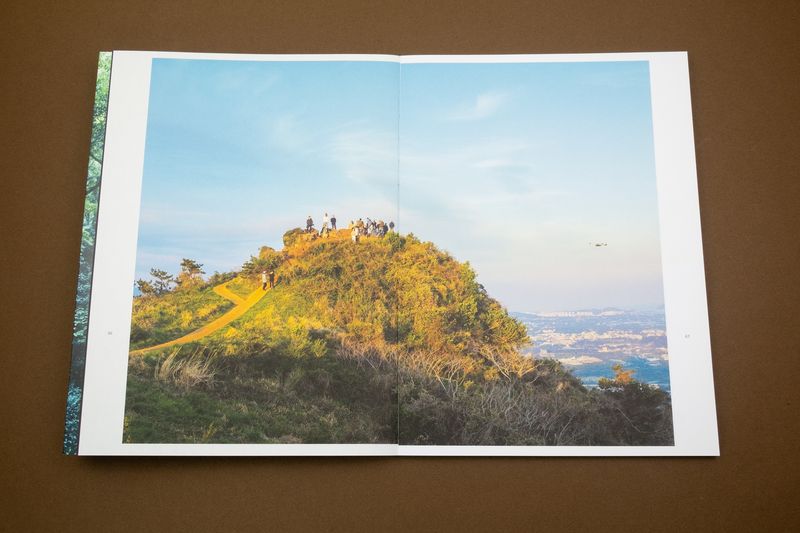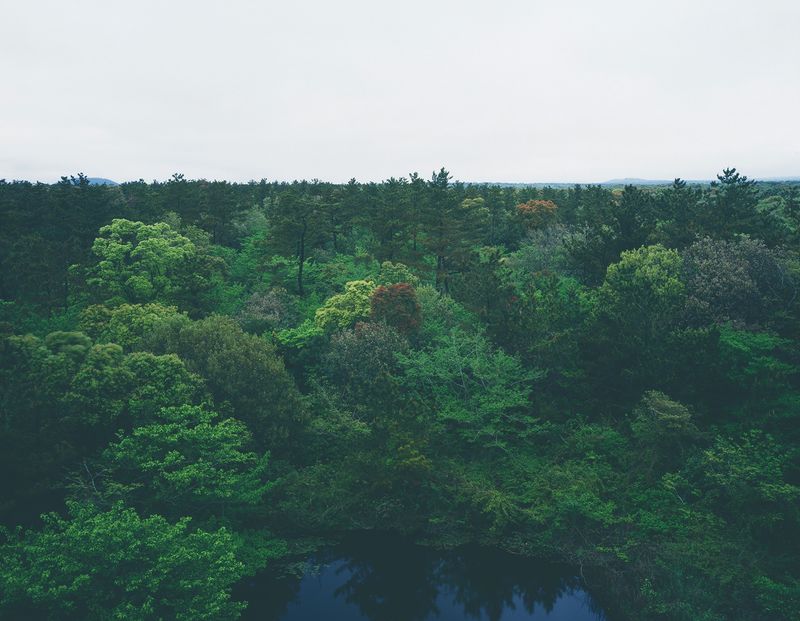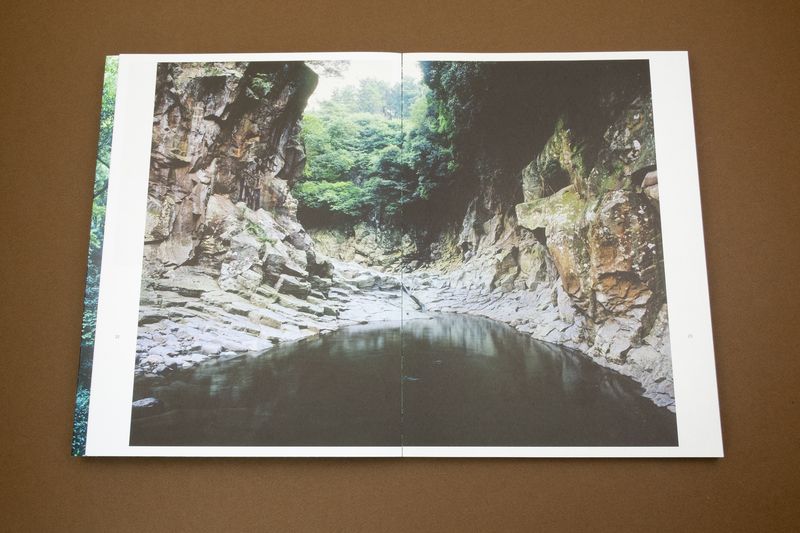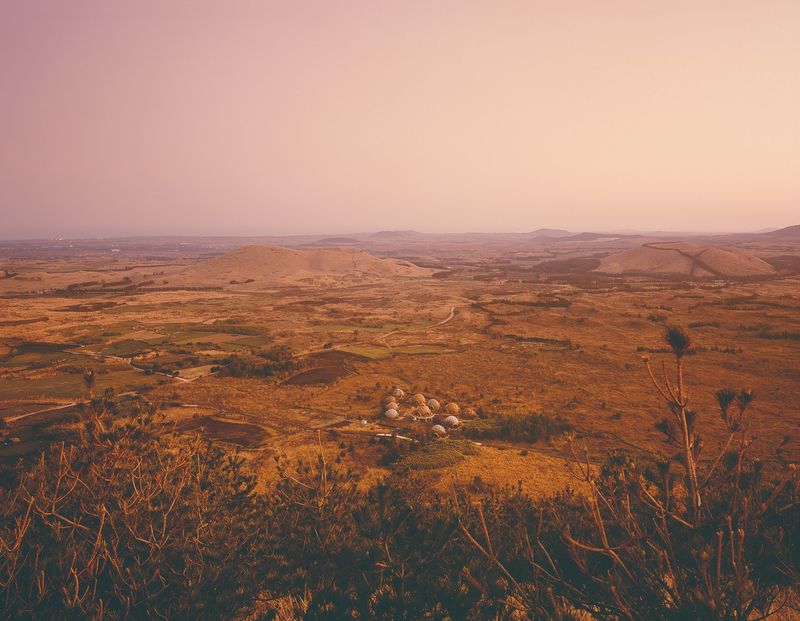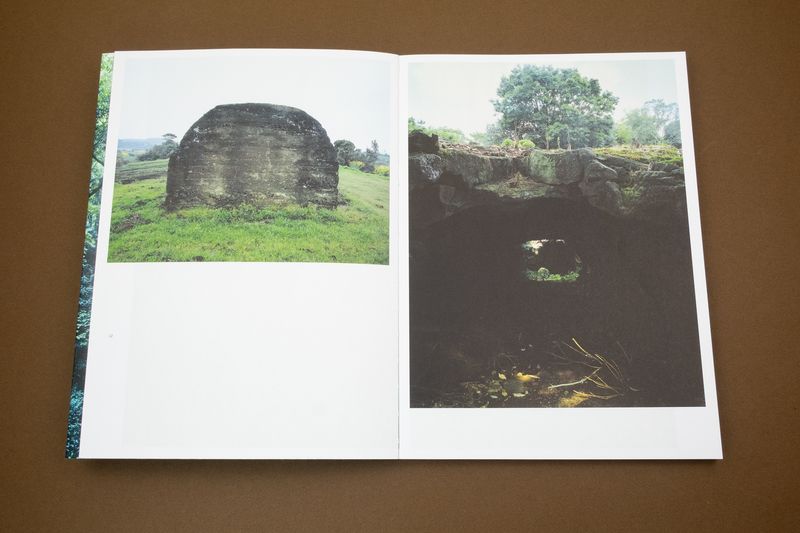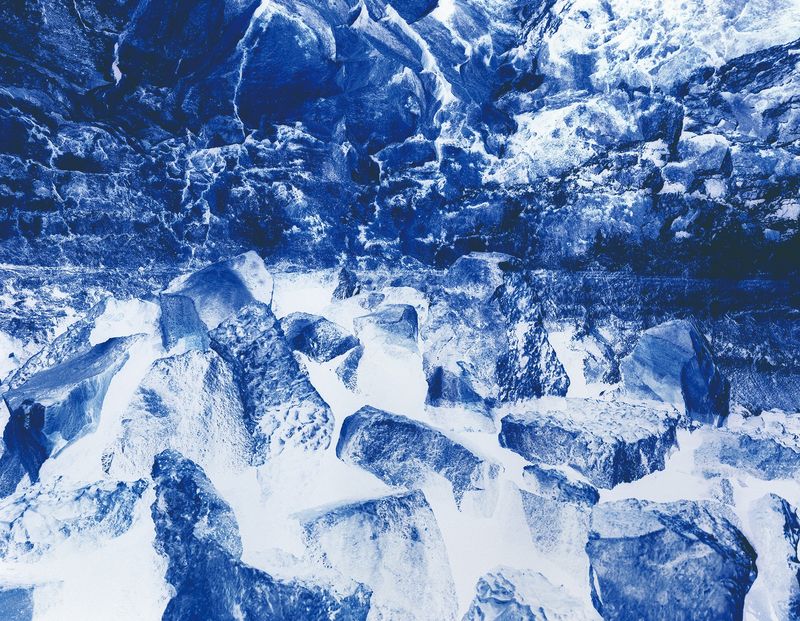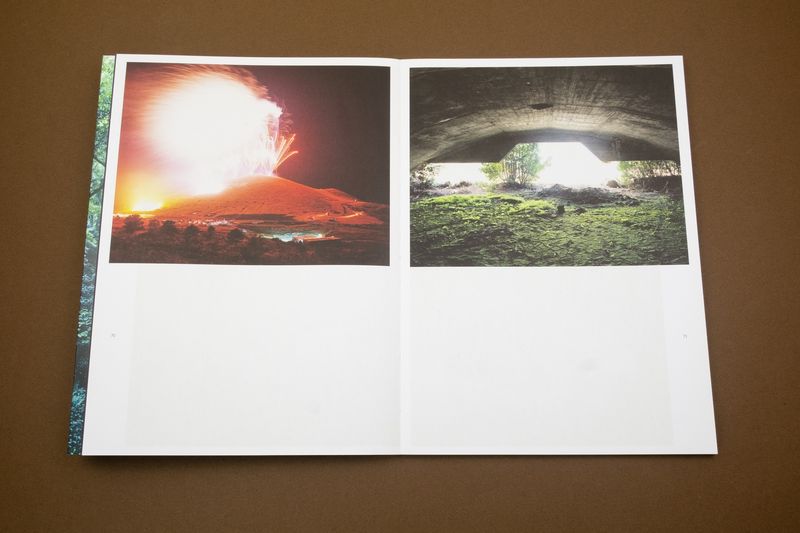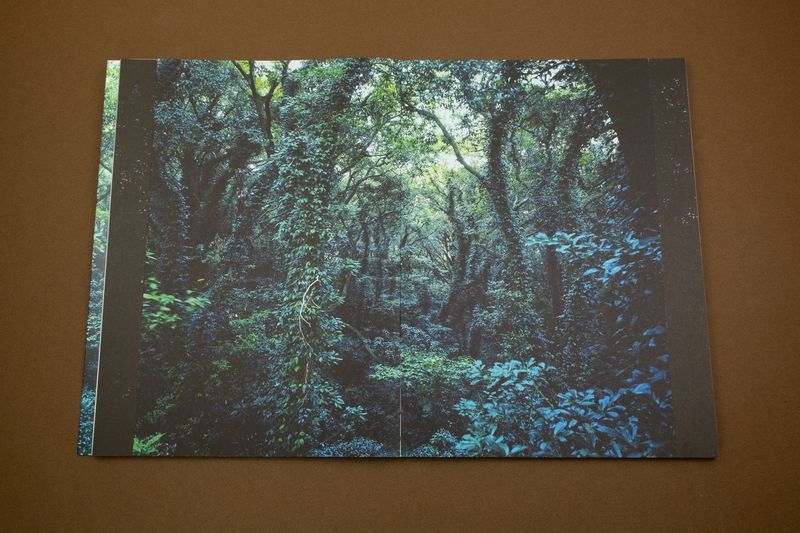Photobook Review: Jejudo: Forbidden Forest by Hyung-Geun Park
-
Published8 Jul 2025
-
Author
Jejudo: Forbidden Forest tells the story of Jeju Island. The island has a wild, mountainous landscape that also serves as South Korea’s prime island getaway. Jejudo tells the flipside to that story; a history of occupation, conflict, and massacre.
There are 360 oreum (small extinct volcanoes) on Jeju Island and one of them, Park tells us in the intro to his book, was in front of the neighbourhood where he lived as a child. There were caves, lava tubes, blind corners, sudden openings, and a sense of sinister mystery.
The oreum serves as an introduction to Jeju Island, an island where silence about the past is folded into the botanical and geological richness of the present.
The first image is of a cyan seascape, a carbon tinge of pollution from China marking the haze in the sky. It’s a dreamy dystopian image that melds into a picture of morning mist rising over a pond in a green pasture.
Images of observatories built on a’a lava, man-made caves mixed with caves of volcanic origin, former Japanese emplacements, and idyllic ponds and streams capture both the physical nature of the island and its history.
One of the captions mentions 4.3, a reference to the (April 3rd) Jeju Uprising, a 1949 massacre that killed over 30,000 of the island’s inhabitants and is regarded by many as a precursor to the Korean War that devastated the country from 1950 to 1953.
So the caves we see, the caves where Park played as a child, are also places of refuge, places of massacres, as well as places of geological rupture. There are multiple histories written into these sites; the personal, the political, the historical, the geological, and that essentially is what the book is about, the intermingling of these multiple versions of how life on earth looks and feels.
So when we see the idyllic pool surrounded by walls of jagged rocks, the question is not only one of how wonderful it would be to dive in and cool off in these clear mountain waters, but also to wonder at what skeletons are literally lingering in its depths.
There are images of the forests that grow over the volcanic soil, including The Forbidden Forest, or Jeju Gotjawala, an evergreen forest and current tourist attraction that was planted to provide a humid buffer-zone against lava-triggered wildfires. It also happened to be a massacre site.
The Forbidden Forest is the subheading of the book, and other projects Park has undertaken are referred to in the snippets of informational text that run through the book.
Though informative, the writing takes away from the immediacy of the work, from the visual poetry that is evident in the colour spreads of the dark creeper-wrapped forest, almost impenetrable as the branches reach up into sky.
They are both symbols of life but also of the deaths that took place under their watch. The memories of the massacres, of the fear and the fleeing into these very woods, are written into their branches, into a timescale that is both above us and beyond us, even as it is still with us.
In contrast to this apparent wilderness are the manmade structures, from the cultish cluster of geodesic domes that Park photographs from up high, to the underground dwellings that have served multiple purposes over the years.
Park adds another layer to this by presenting elements of the island as tourist spectacle. That mist-clad pond in the pasture is transformed once the scene is filled with people posing, photographing, and sharing the landscape. The negative version of a kind of world in miniature, complete with a White House, ziggurat, and fully collapsed Tower of Pisa.
Towards the end of the book, there is a diptych of two lava tubes, one facing into the darkness of the earth, the other facing into the bright light of the sky. Take your pick. Walk into the dark or walk into the light. They both mean death and that ultimately is what this book is about.
--------------
Jejudo by Hyung-Geun Park is published by The Eriskay Connection
225 × 310 mm
128 pages
English + Korean
Swiss-bound softcover
TEC132
Essays: Elisa Medde and Nayun Jang
Design: Carel Fransen
Lithography: Gaëlle van den Dool (Wilco Art Books)
Production: Wilco Art Books
First edition: 400
€40
--------------
All images © Hyung-Geun Park
--------------
Hyung-Geun Park (1973) is a South Korean artist and photographer who graduated from Goldsmith College in London. Using photography to capture the subtle nuances of everyday life and the ephemeral qualities of the natural world, Park often reflects on the balance between untouched nature and human influence.
Colin Pantall is a photographer, writer and lecturer based in Bath, England. His next online courses and in person workshops begin in October 2025. More information here. Follow him on Instagram

